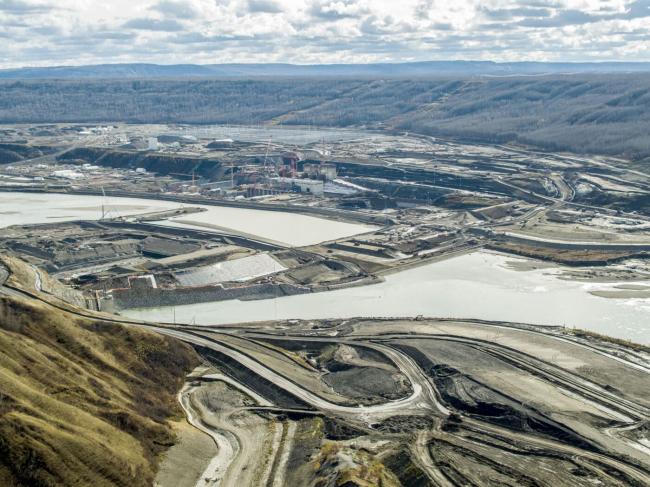Two top B.C. civil servants, including the senior bureaucrat who prepares Site C dam documents for cabinet, knew in May 2019 that the project faced serious geotechnical problems due to its “weak foundation,” according to documents obtained by The Narwhal.
Energy ministry assistant deputy minister Les MacLaren and deputy finance minister Lori Wanamaker also knew the following month that the over-budget project had almost exhausted its $858 million contingency fund, a likely sign of another cost overrun, according to the documents, which were released under B.C.’s freedom of information act.
Yet British Columbians — the owners of the publicly funded dam on the Peace River — didn’t learn about the project’s escalating troubles for more than a year, until Energy Minister Bruce Ralston held a brief press conference on July 31, the same day BC Hydro released overdue Site C dam reports.
The belated BC Hydro reports said the Site C dam faces unknown cost overruns, schedule delays and such profound geotechnical troubles that its overall health is now classified as “red” — meaning it is in serious trouble.
In late January, The Narwhal submitted a freedom of information request to BC Hydro, asking for all Site C project assurance board agendas, minutes, reports and recommendations.
Premier John Horgan created the project assurance board in December 2017 after his government approved the dam and added another $2 billion to the project budget. But the NDP government subsequently refused to release any of the board’s findings or a list of its members.
Following an appeal to the Office of the Information and Privacy Commissioner after BC Hydro missed a legal deadline for responding, we received 2,247 pages of documents almost seven months after filing the request.
(The Narwhal is releasing the FOI response in its entirety to the public and it can be accessed at the following links: Part 1, Part 2, Part 3, Part 4, Part 5.)
The documents reveal new information about the dam’s geotechnical struggles and raise troubling questions about who in government knew about the project’s climbing costs and deepening geotechnical woes, when they knew it and why the information was not made public.
Key sections of the documents, including information pertaining to rising cost pressures and the severity of key project risks from January 2018 to January 2020, are redacted.
Even so, the documents paint a picture of a project rife with growing geotechnical issues and risks as well as safety and quality concerns — and facing a rising risk of cost overruns and schedule delays — long before the COVID-19 pandemic shut down much of the province and temporarily scaled back the Site C dam workforce in mid-March.
On Sept. 1, 2019, for instance, nearly one year before the public learned of significant problems and a soaring price tag for the Site C dam, BC Hydro submitted a weekly status report to the assurance board listing the overall health and cost of the dam’s main civil works as “red,” meaning the civil works — the dam structure, generating station and spillways — were in deep trouble.
‘A matter of grave public concern’
Harry Swain, who chaired the joint review panel that examined the Site C project for the federal and provincial governments, said it is “anomalous” that project assurance board reports have been kept secret by the B.C. government until now and key information is still being withheld.
“This project is proceeding in doggone secrecy that just is not at all common in large public projects of any kind,” Swain, a former federal deputy minister, told The Narwhal.
“This is a matter of grave public concern and we, as taxpayers or ratepayers, are going to wind up paying a heck of a lot of money for it,” said Swain, who was also Canada’s director general for electricity and the country’s first senior advisor for renewable energy.
“It looks like we’re going to lose $10.7 billion on this project. That would take care of the homelessness problem, unequitable incomes, First Nations health and several other things, all at once.”
In July, when BC Hydro released the overdue reports, the public utility said it didn’t know when the Site C dam — slated for completion in 2024 — will be finished or how much it will cost beyond its current $10.7 billion budget.
BC Hydro also said it hasn’t figured out how to resolve grave geotechnical issues, which require shoring up the unstable foundation of the earthen dam, powerhouse and spillways.
Site C project assurance board documents reveal an important meeting took place at the end of May 2019, when the Site C dam technical advisory board — a panel of engineering and construction experts — convened in Fort St. John and Vancouver over a three-day period.
A list of the meeting attendees is redacted, but the documents show a de-briefing was conducted with BC Hydro executives and project assurance board members on May 31, 2019.
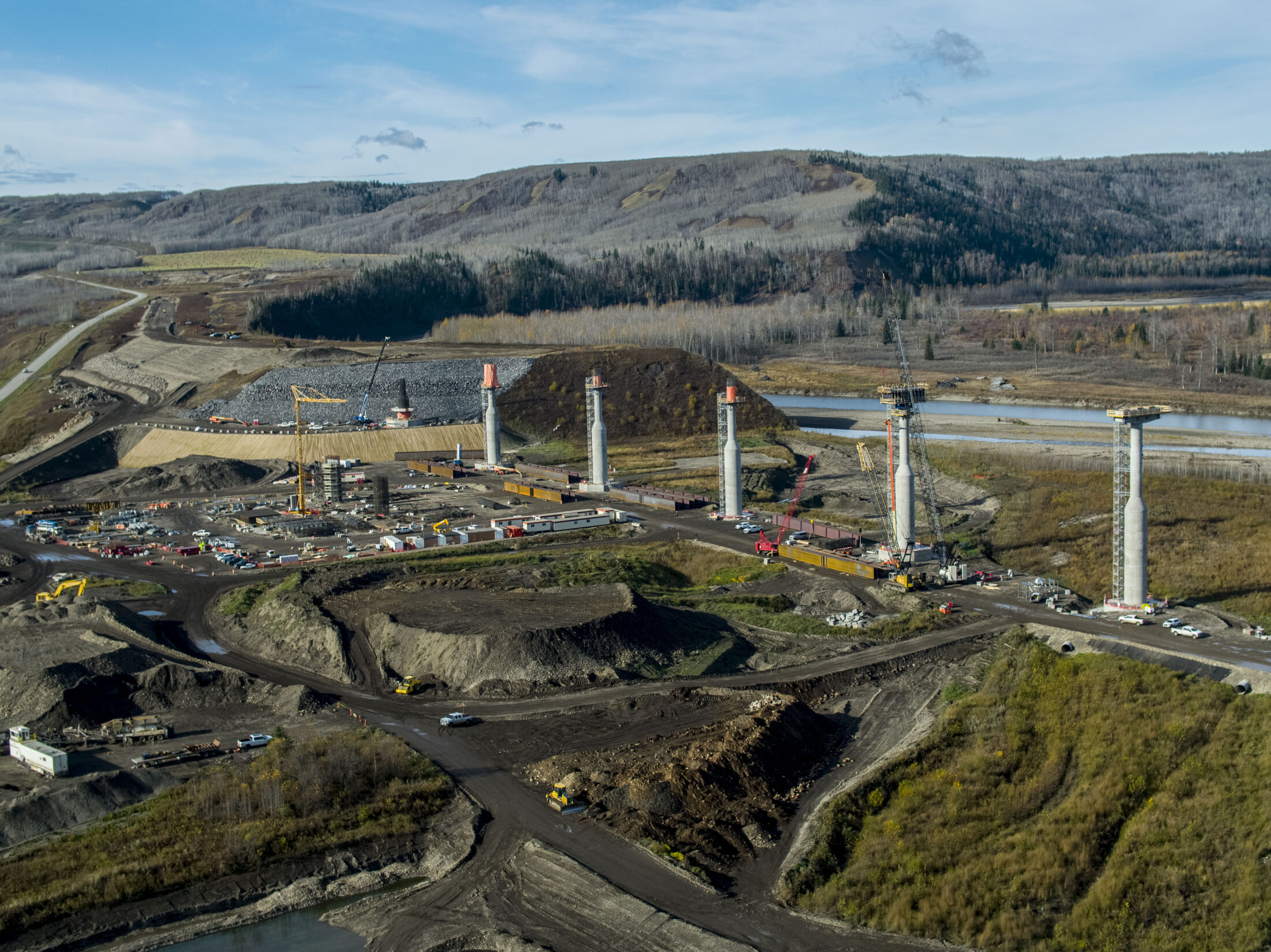
Premier John Horgan created the Site C project assurance board in December 2017. But the NDP government subsequently refused to release any of the board’s findings or a list of its members. In late January, The Narwhal submitted a freedom of information request to BC Hydro, asking for all Site C project assurance board agendas, minutes, reports and recommendations and received 2,247 pages of documents about seven months later. Photo: Jayce Hawkins / The Narwhal
Stability of the dam ‘a significant risk’
The main objective of the three-day meeting was to assess progress and performance on the Site C project, as well as to assess design-related risks. The primary area of focus was the main civil works — the dam structure, powerhouse and spillways — according to the documents.
The technical advisory board found the stability of the dam is “a significant risk and the hazards associated with the weak foundation have been adequately recognized.”
“We’re talking about a possible lack of stability under the dam itself,” U.S. energy economist Robert McCullough said in an interview.
“Literally, if we look at some of the academic articles that have been written about this, we could be talking about a dam that’s going to crack or slide in the case of an earthquake,” said McCullough, a former officer for a large hydroelectric facility in Portland, Oregon, who has studied the Site C project extensively. “Since there are earthquakes in this part of the world, this is a very important issue.”
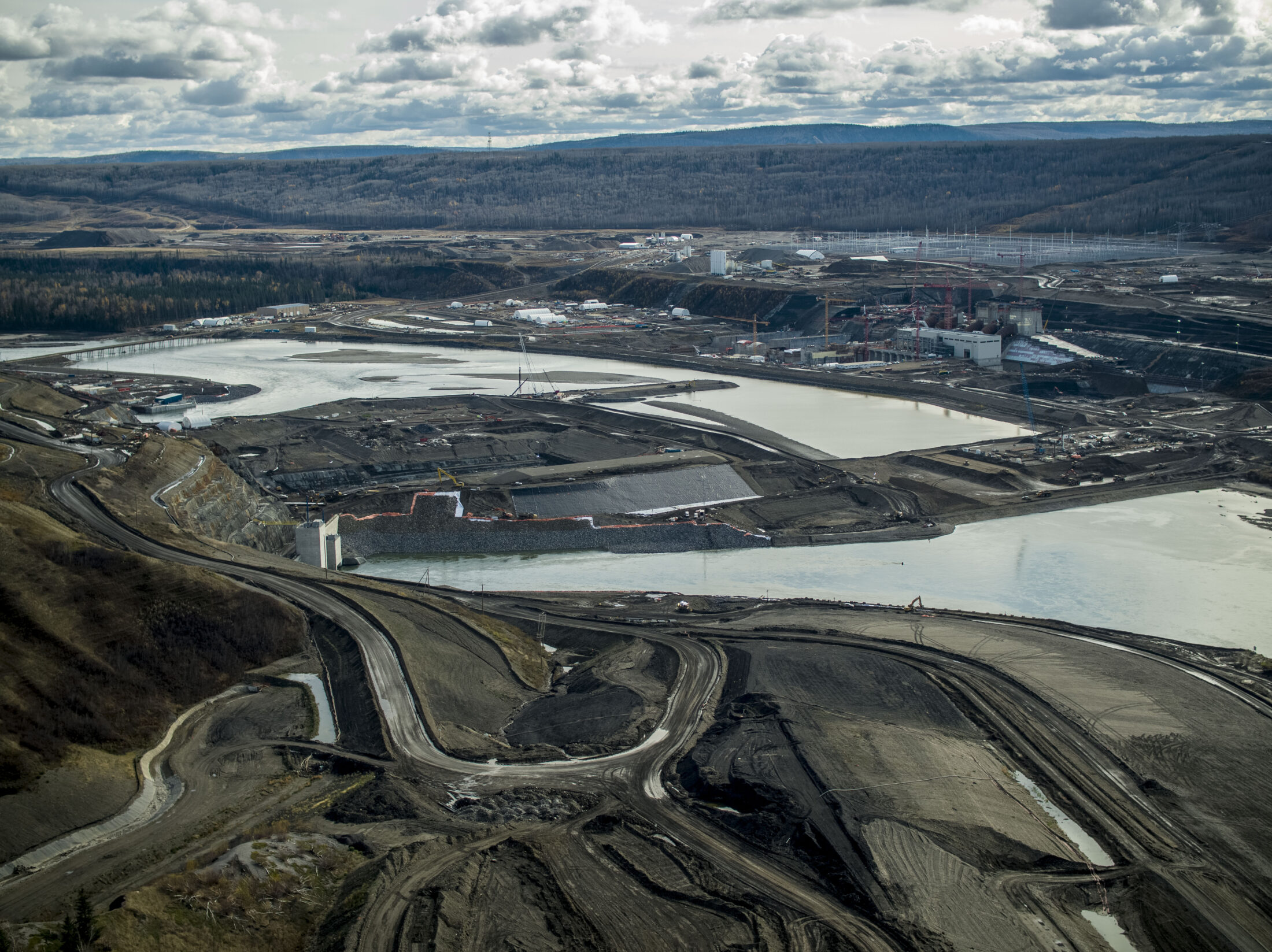
The Site C project is located in a geographical area filled with faults that can become critically stressed during fracking operations, which are poised to expand significantly in the region to supply gas for the LNG Canada export project. In 2017 and 2018, more than 10,000 earthquakes occurred in the wider area, including one that shook the Site C dam construction site in November 2018, forcing workers to evacuate.
The advisory board also said the Site C dam’s design — changed to an unconventional L-shape, much to the concern of retired BC Hydro engineer Vern Ruskin — needed to be checked.
It outlined seven steps for BC Hydro to follow, including calculating “the factor of safety” at the end of construction and again at the end of reservoir filling, and requested an update at its next meeting.
“They’ve gotten pretty het up over this,” McCullough said. “This is a tone that says ‘you’ve got to do a ton of work right now, and we want to hear back that you’re doing it.’ Some of these things are pretty major.”
B.C. ministers likely aware of escalating problems
According to the documents, the Site C project assurance board has an “oversight function to help ensure that the project is completed on time and on budget, and that risks are appropriately identified, managed and reported on an ongoing basis.”
Swain said the assurance board, despite its moniker, is not an oversight board. He described it as “pretty much an emanation of BC Hydro, with a few additions.”
“That is a management board,” he said. “If you’re going to have some kind of oversight or project assurance you want some really independent people. You want to have a few experts — particularly geotechnical ones — who have a lot of experience around the world and have no interest in further employment by BC Hydro. They’re really independent in that sense.”
MacLaren, the long-time assistant deputy energy minister who prepares Site C documents for cabinet and reviews BC Hydro’s quarterly Site C progress reports to the B.C. Utilities Commission, is one of two government representatives on the board.
The other representative is Wanamaker, who in 2017 challenged the commission’s final findings about the Site C project in a six-page letter to the commission that seemed to suggest the new NDP government was searching for a rationale to continue the project.
The independent commission found the Site C dam’s final price tag could exceed $12 billion and the same amount of energy could be produced by a suite of renewables, including wind, for $8.8 billion or less. It also found that BC Hydro had a historical pattern of over-forecasting energy demand.
According to documents on BC Hydro’s website, the project assurance board is at the centre of Site C dam communications among BC Hydro’s board of directors, the energy ministry, and treasury board and/or the finance ministry.
Swain said it would be “strange” if MacLaren and Wanamaker had failed to inform their ministers — then Energy Minister Michelle Mungall and Finance Minister Carole James — about mounting problems with the Site C project during 2019.
“It strikes me as highly unlikely that the most senior officials in those departments and the ministers would be unaware of the developing difficulties,” Swain said.
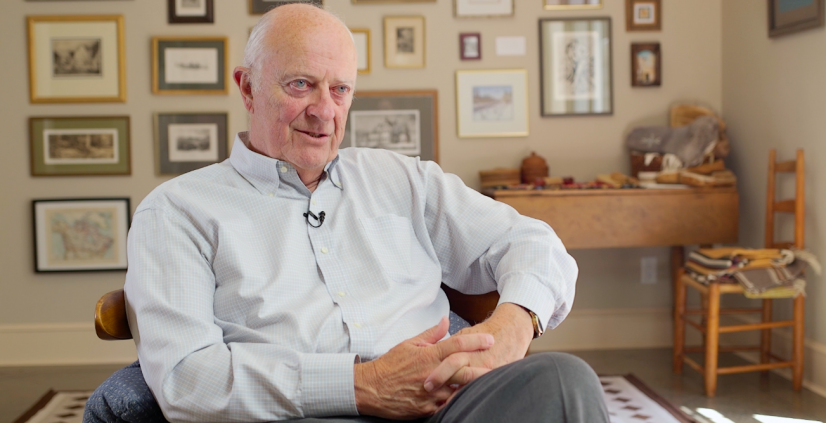
Harry Swain chaired the panel that reviewed the Site C dam on behalf of the provincial and federal governments. He says it’s “highly unlikely” that government the ministers would have been unaware of the escalating construction difficulties at the Site C dam. Photo: Jayce Hawkins / The Narwhal
An ‘egregious’ problem with oversight for Site C and Muskrat Falls dams
For David Vardy, the retired chair of Newfoundland’s public utilities board, the Site C project’s lack of transparency and escalating costs create a sense of déjà-vu.
The failure to disclose the Muskrat Falls dam’s rising costs to ratepayers was a front-and-centre issue in Newfoundland, where the over budget dam on Labrador’s Churchill River will require a bail-out from federal taxpayers to avoid a minimum 50 per cent increase in provincial hydro rates.
An inquiry into the $12.7 billion Muskrat Falls project examined why the provincial government didn’t cancel the uneconomic project when there was still time.
The inquiry’s scathing report, released in March, found executives at the Crown corporation responsible for building the dam “frequently took unprincipled steps” to secure approval of the project, while governments were “determined to proceed” through a lens of political bias.
Since the inquiry, the cost of the Muskrat Falls dam has climbed again, to $13.1 billion, and Vardy predicts another $1 billion will be added to the tab before the dam becomes operational at least three years behind schedule.
“I think there’s an egregious problem with oversight on the two projects,” Vardy said in an interview. “If anything, it almost appears in some respects that Site C oversight is not as good as what we’ve had here.”
Vardy said it would have made “all the difference in the world” if ratepayers in both provinces had been apprised of rising costs earlier. “They [Crown corporations] are in the same camp of misrepresenting their costs to the public and misrepresenting to the public what’s going to happen at the end of the day. It’s bad public policy because you don’t have transparency.”
The Site C project assurance board documents beg the question of who has been looking out for the public interest in B.C. since the board began meeting in January 2018, using weekly information from BC Hydro to review expenditures and progress on the dam.
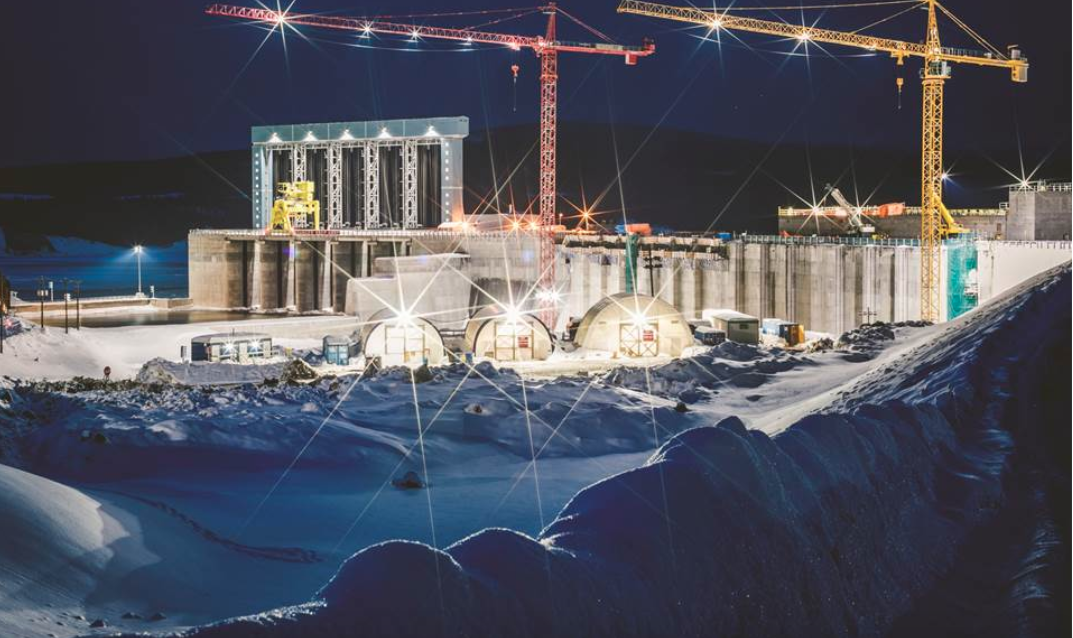
The Muskrat Falls Dam pictured here under construction in April 2018 was the subject of a public inquiry due to the project’s high costs. “If anything, it almost appears in some respects that Site C oversight is not as good as what we’ve had here,” said David Vardy, the former chair of Newfoundland’s public utilities board. Photo: Nalcor Energy
Project assurance board voted to increase SNC Lavalin’s contract
The assurance board is chaired by John Nunn, the former chief project engineer for the Site C dam and a BC Hydro director since January 2020.
Nunn worked for the Vancouver-based engineering and consulting firm Klohn Crippen Berger, a major donor to the BC Liberal Party.
Along with embattled engineering giant SNC Lavalin, also a major donor to the BC Liberal Party, Klohn Crippen began to receive direct award Site C contracts after former Premier Gordon Campbell announced in 2010 that the project would proceed to review. (Donations to political parties by corporations and unions were banned in B.C. after the NDP took power in 2017.)
Direct award contracts — which are prohibited by the federal government if they are larger than $25,000, unless they are needed for special justifications such as a national emergency — allow BC Hydro to decide which companies get contracts instead of going through a more transparent and competitive tender process.
The documents show the BC Hydro board of directors approved the retention of the two firms to design core components of the Site C dam in November 2014, the month before the former BC Liberal government announced the project would proceed.
Klohn Crippen was given a direct-award Site C contract for $104 million to design essential components of the dam, including the main civil works, generating station and spillways, according to the documents.
SNC Lavalin received a direct award contract for $131 million, also to design core components of the dam.
The core components of the dam are now in question due to the lack of solid ground on which to anchor the dam structure, powerhouse and spillways — an issue flagged years ago by both SNC Lavalin and Klohn Crippen as a potential project risk.
In February 2019, with geotechnical issues an ongoing concern, the project assurance board authorized an “increase” to the Site C engineering design service agreements with Klohn Crippen and SNC Lavalin, the documents disclose.
The amount of the increase is redacted from the documents, which show Nunn abstained from the vote due to his prior working relationship with Klohn Crippen.
On July 31, well over a year after the assurance board approved additional funds for SNC Lavalin and Klohn Crippen, BC Hydro reported to the B.C. Utilities Commission that “the foundation enhancement costs are expected to be much higher than initially expected.”
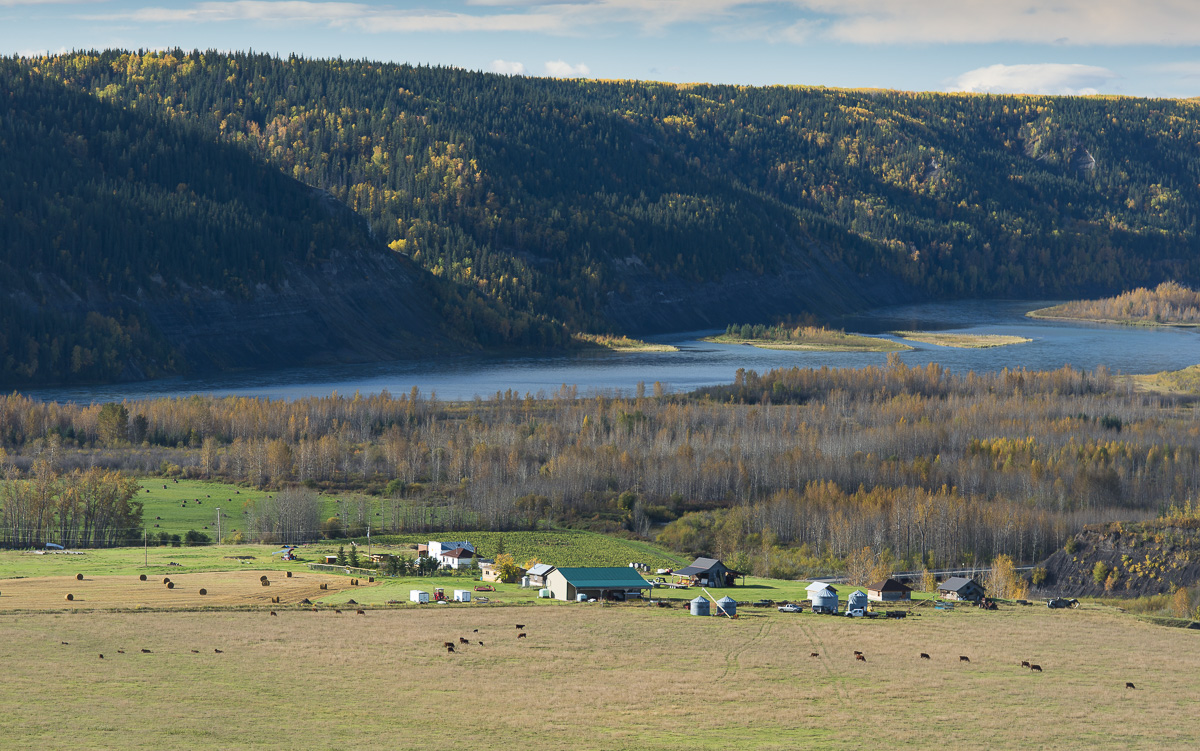
The third-generation Boon family farm sits within the 128 kilometres of river valley that is set to be flooded for the Site C dam. Photo: Garth Lenz / The Narwhal
Assurance board hired ‘independent’ engineer from company represented on board
Also on the Site C project assurance board is Joe Ehasz, the California-based program manager for AECOM Energy & Construction, a company that had received $225,000 in Site C dam contracts by May 2017.
In August 2019, according to records obtained by The Narwhal through a separate freedom of information request, the company’s subsidiary AECOM Technical Services also received a $132,000 Site C dam contract to provide an “independent construction advisor” for the project.
Board members include three other BC Hydro directors, Concert Properties CEO David Podmore and Lorne Sivertson, an energy consultant and the author of a pro-Site C report for B.C. construction trade unions that was used to discredit the utility commission’s findings.
The documents show MacLaren and Wanamaker were privy to a January 2018 report from the project’s technical advisory board that described construction schedules as “aspirational” and identified geotechnical stability issues as a risk that could further impede progress building the dam.
In a report for the project assurance board one year later, covering the week ending Jan. 25, 2019, BC Hydro points to the most serious geotechnical issue plaguing the project today — the lack of solid ground on which to anchor the dam structure, powerhouse and spillways — as a topic of discussion in a conference call with the project’s technical advisory board.
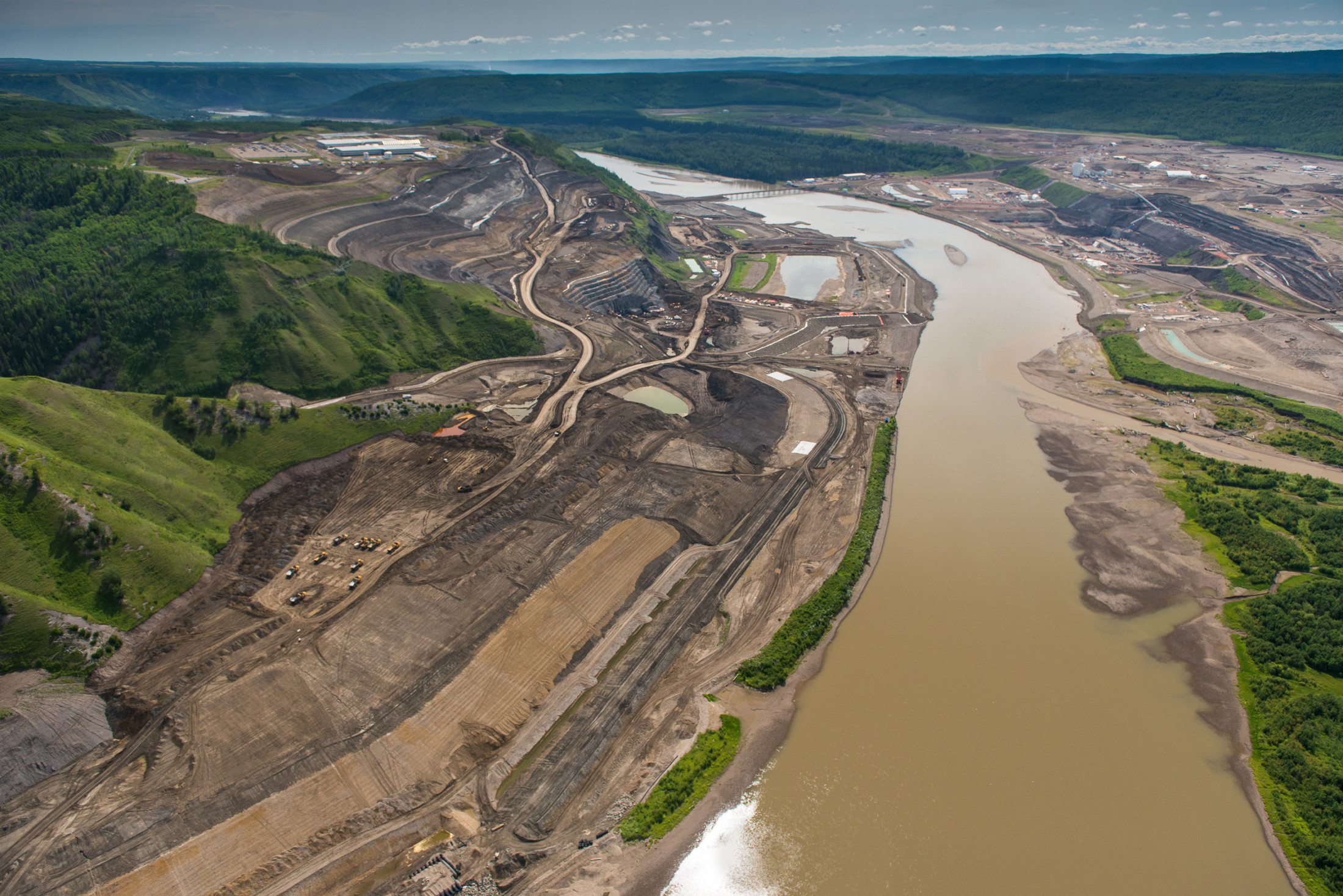
Site C dam construction on the Peace River. Photo: Garth Lenz / The Narwhal
The design team presented information on the “small amount of movement on a bedding plane” and “the compression of the foundation from powerhouse buttress loading,” the report noted.
The site where the dam is being built contains “bedding planes” between layers of sedimentary shale that have poor shear strength, meaning they could suddenly shift under modest amounts of force. The site, in Swain’s words, is composed of “relatively youthful and unpetrified sediments, some of which appear in the form of weak shales, mudstones, siltstones and some of which appear in the form of clay.”
“Those sedimentary muds and rocks and clays and whatnot are known to react quite alarmingly either in the presence of a lot of water or a lot of dryness,” Swain said.
“They swell and shrink. They move around. It’s not the sort of geology that you’d really want to go out and put a multi-million tonne dam on, or even a roller compacted concrete powerhouse.”
Swain said he was puzzled by BC Hydro’s re-design of the dam to an L-shape after the joint review panel assessed the project.
“I think we’re finally seeing some kind of response to the question of why the heck did they [decide to] build an L-shaped dam when nobody’s ever done that in the world before.” (BC Hydro has pointed to several examples of L-shaped dams around the world, but those dams are not earthfilled like the Site C dam.)
“The suspicion is that the initial placement of the powerhouse was found to be over an especially weak spot,” Swain said. “By turning it 90 degrees, they thought they would avoid the problem. It appears that they may not have.”
Site C dam’s civil works in serious trouble almost one year before public disclosures
On Sept. 12, 2019, nearly one year before the public learned of the project’s rising price tag, BC Hydro informed the assurance board that geotechnical risks were “likely,” potentially increasing costs and causing a schedule delay. BC Hydro also warned of the “likely” risk of additional engineering costs.
The severity and probability of those costs were redacted from the documents, along with contingency cost pressure items. But by Sept. 1, 2019, according to the documents, the entire contingency fund had been spent, with five years of construction still ahead.
BC Hydro also said there was a “likely” risk that Highway 29 budgets are “based on incomplete designs, with limited construction market data.” To accommodate the Site C dam’s reservoir, about 30 kilometres of the highway in six different sections, including four bridges, will have to be relocated.
Dam spillway costs would increase materially due to design changes and reservoir clearing costs would be higher than allocated for in the budget, the assurance board also learned. The severity, probability and cost of those risks were redacted from the documents.
Nine days later, a Sept. 21, 2019 report from Steve Summy, the AECOM “independent construction advisor” — a position created by the project assurance board — flagged safety, quality, schedule and cost issues on the project’s left bank.
Key parts of Summy’s conclusions are redacted from the documents. However, Summy zeroed in on the “poor” quality of the finished surface in the river diversion tunnels, recommending a finishing crew begin work as soon as possible. He cautioned against “pressure to accept a substandard product to finish on time” and noted the application of shotcrete — sprayed concrete — in the tunnels was “inconsistent.”

By Sept. 1, 2019, the Site C dam’s entire contingency fund had been spent, with five years of construction still ahead, according to documents obtained by The Narwhal. Photo: Jayce Hawkins
Six ‘significant’ technical risks identified
The May 2019 report from the technical advisory board — shared with BC Hydro executives and the project assurance board members on May 31 of that year — identifies six “significant” technical risks.
They include the “stability of the earthfill dam and tailrace wall,” described as a “significant risk due to the weak foundation” in a 15-page report that recommended seven steps to check the project’s design and calculate the factor of safety.
A second risk is the right bank foundation, which forms the shorter arm of the radically re-designed L-shaped structure. Structures on the right, or south, bank of the Peace River include the power house, spillways and earthfill dam.
The technical advisory board noted “the hazards associated with various ground defects affecting stability have been correctly identified” on the south bank “as have risk mitigation efforts based on seepage control and drainage.”
But a greater effort was required, the board said. Those efforts should include making it a “high priority” to develop a hydrogeological model of the right bank to determine how the bank would respond to reservoir filling, the board said.
The technical advisory board also flagged the earthfill dam foundation and grouting as a significant risk.
The stability of slopes and foundation at the dam site could potentially be “decisively” affected by hydrogeological conditions and phenomena, the technical advisory board noted.
“Simple flushing of a borehole has immediately raised the groundwater levels in an extensive section of the right abutment and has caused displacements on bedding planes. Rainfall has triggered similar effects.”
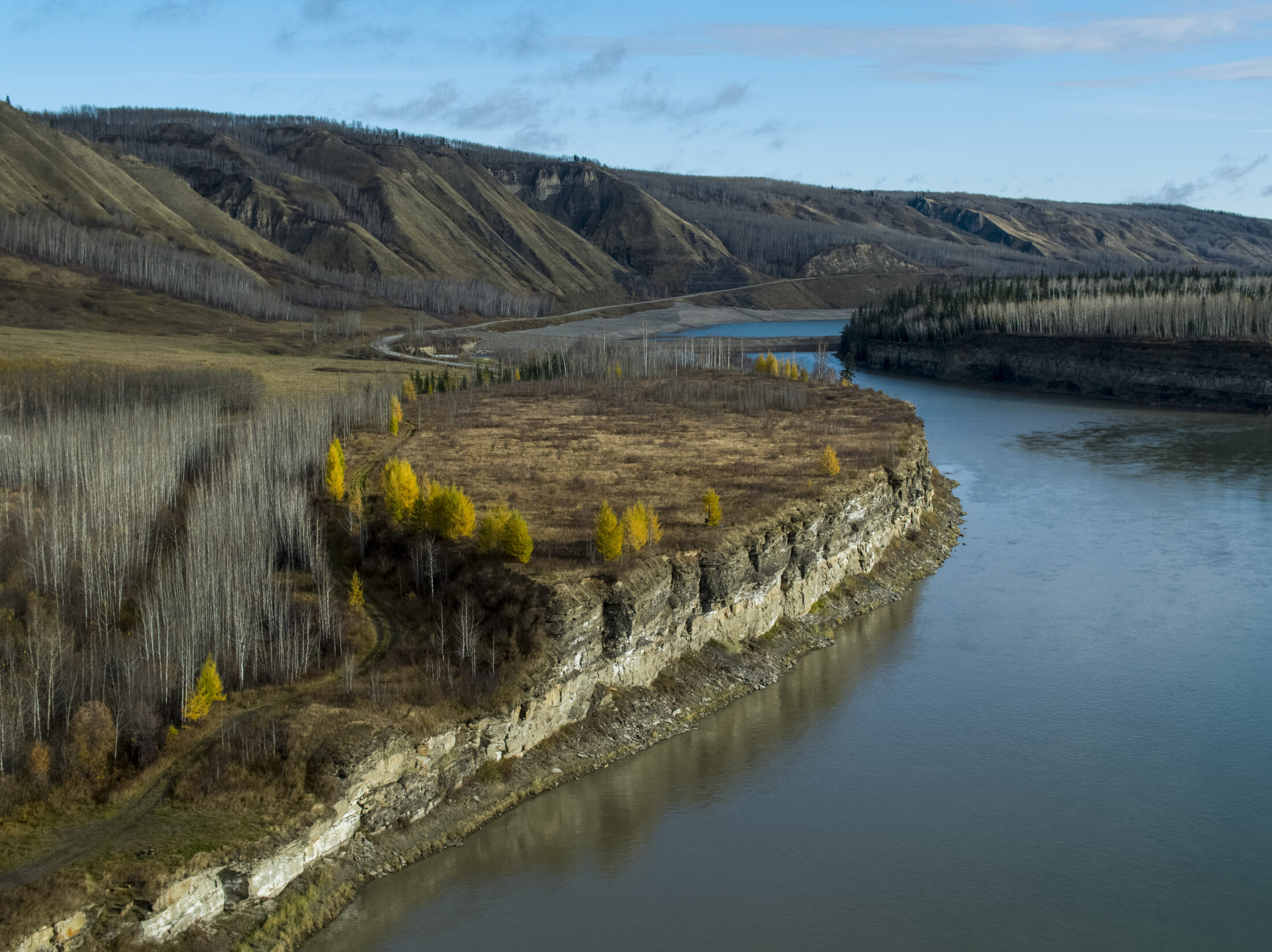
The Site C dam is being built in an area that contains “bedding planes” between layers of sedimentary shale that have poor shear strength, meaning they could suddenly shift under modest amounts of force. Photo: Jayce Hawkins
For the grout, “options for responses to approaching risks are more limited,” the board noted. “Especially in the right abutment, groundwater levels rising with the lake are capable of jacking open the existing stress relief features and, in this process, not only raising the hydraulic load on the curtain but also, in the worst case, damaging the curtain by hydrojacking.”
As a precaution, the board says grouting could be performed to obtain a “safe pre-stressing of the rock mass against the hazard of hydrojacking.”
“Such measure has positive precedent but meets with difficulties imposed by the geological and geotechnical conditions prevailing at Site C…” the board noted.
A further risk is the thermal performance of roller compacted concrete and cracking. Cracks in the roller compacted concrete have “been recognized and studies are underway to evaluate their extent and significance,” the board noted.
“If, ultimately, substantial grouting is necessary to repair such cracks, a complex and costly program could result,” the board said, adding it wished to be kept informed on progress “associated with managing this risk.”
Neither BC Hydro nor the B.C. government are responding to media questions during the provincial election campaign, unless inquiries pertain to health and safety or statutory requirements.
Calls for independent safety review, cancellation
If completed, the Site C dam will flood 128 kilometres of the Peace River and its tributaries, putting Indigenous burial sites and traditional hunting and trapping grounds, some of Canada’s best farmland and habitat for more than 100 species at risk of extinction under up to 50 metres of water.
Swain and others — including members of the Peace Valley Landowner Association and residents of the community of Old Fort, downstream from the Site C dam — are calling for an independent safety review of the project. Swain said the safety review should follow investigations by independent geotechnical engineering experts.
“I strongly believe that BC Hydro and the government should pause the construction, do that work and then take another decision,” Swain said.
“That’s entirely aside from the economics of the case which have been abysmal for some time and are getting worse.”
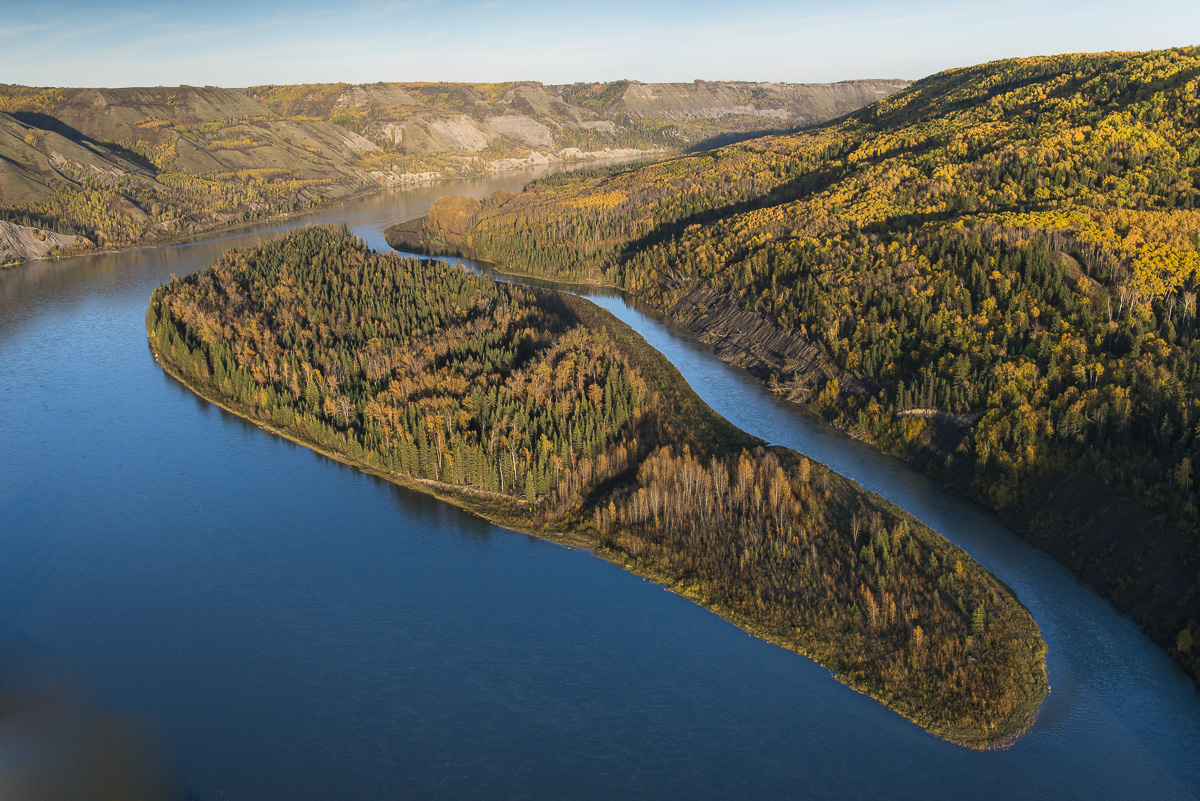
Forest in the Peace River valley in the Site C dam flood zone. Photo: Garth Lenz / The Narwhal
Two new expert reports, including one written by McCullough, conclude British Columbians will save money if the Site C dam is immediately cancelled by the new provincial government following the Oct. 24 election.
McCullough’s report, commissioned by the Peace Valley Landowner Association, said the dam will conservatively cost an additional $2.1 billion and ratepayers will save an initial $116 million a year if the project is scrapped and the same amount of energy is procured from other sources.
An “intelligence memo” from the C.D. Howe Institute, addressed to B.C.’s upcoming new government, says the case for the Site C dam is “getting weaker” and any meaningful cost increase makes cancellation the best choice.
The documents show the Site C project had spent $3.5 billion of its budget by March 31, 2019. The latest figures show $5 billion has been spent. But McCullough, Swain and Vardy all point out the only cost the government should consider is the one to come.
Ralston announced in July that the government has appointed Peter Milburn, a former deputy minister of finance and secretary to the Treasury Board, as a special Site C project advisor who will work with BC Hydro and the Site C project assurance board to examine the project and provide the government with independent advice.
But whether or not Milburn’s findings will be made public remains to be seen.
McCullough said Milburn’s appointment underscores the problem of “who guards the guards.”
“Normally, in a construction project, you want as clean a chain of command as possible,” he said. “In this case it would be the premier at the top, then the chairman of the board of BC Hydro and then the engineers at the bottom.”
But in the case of the Site C dam, McCullough said there’s “a cloud of committees and cross-committees watching each other.”
McCullough said the Site C dam’s geotechnical challenges call for “the simplest and most direct and most hands-on management, and what we have is a committee of committees.”
